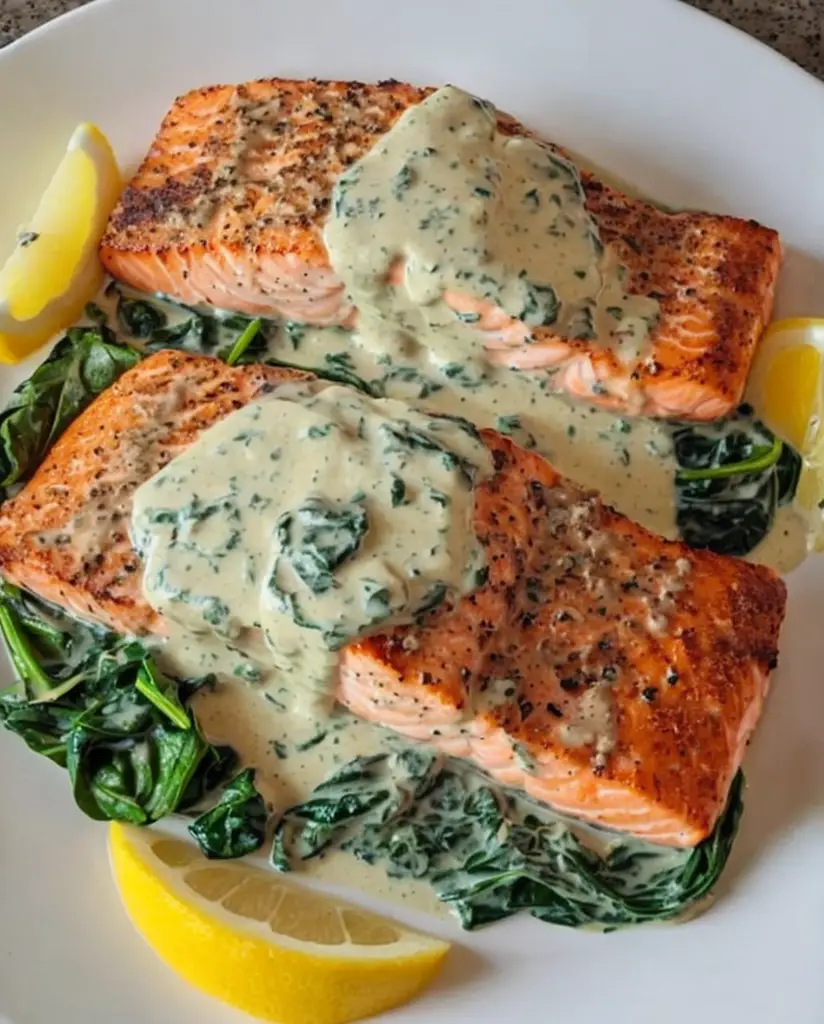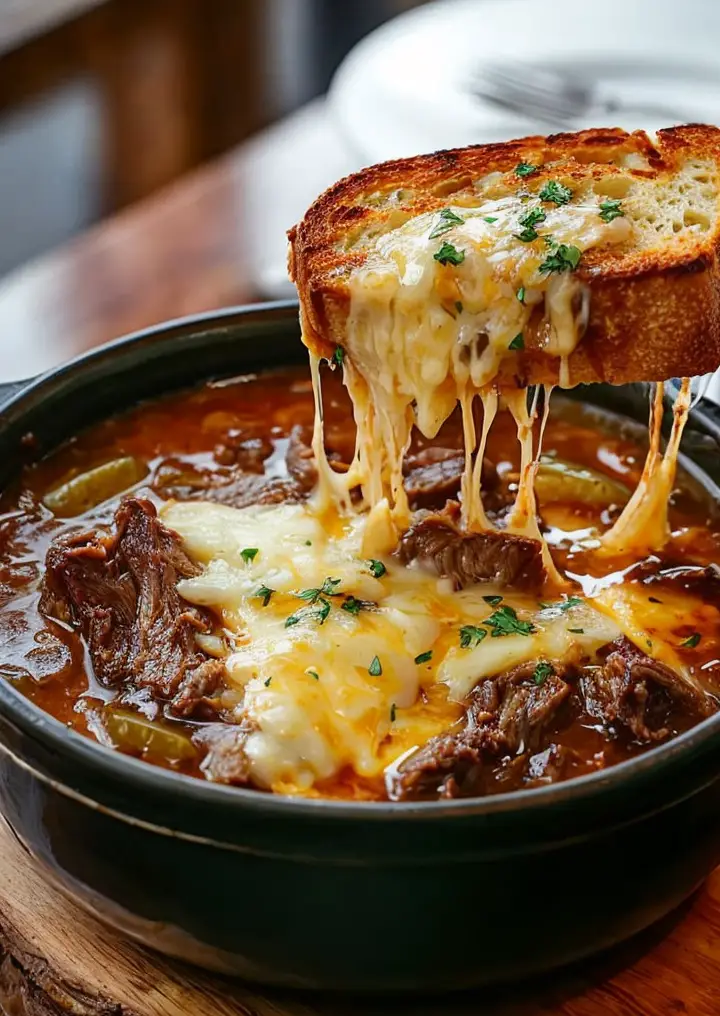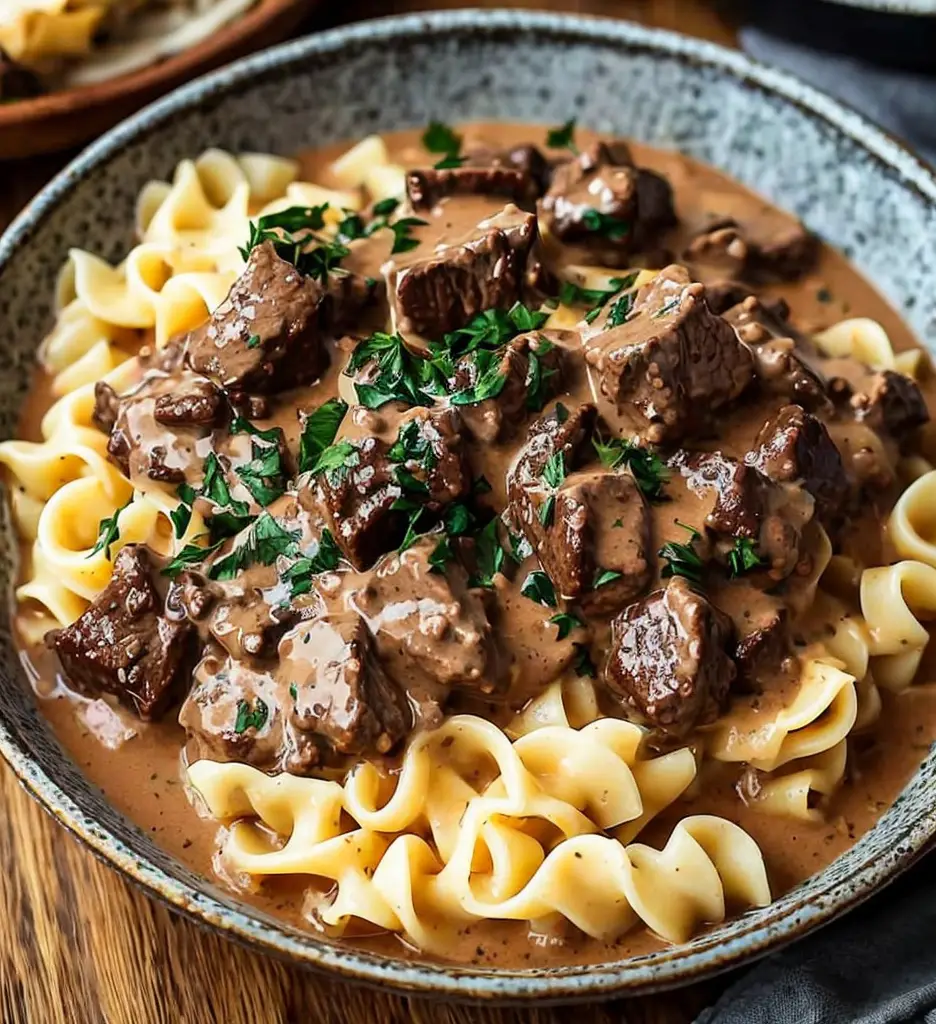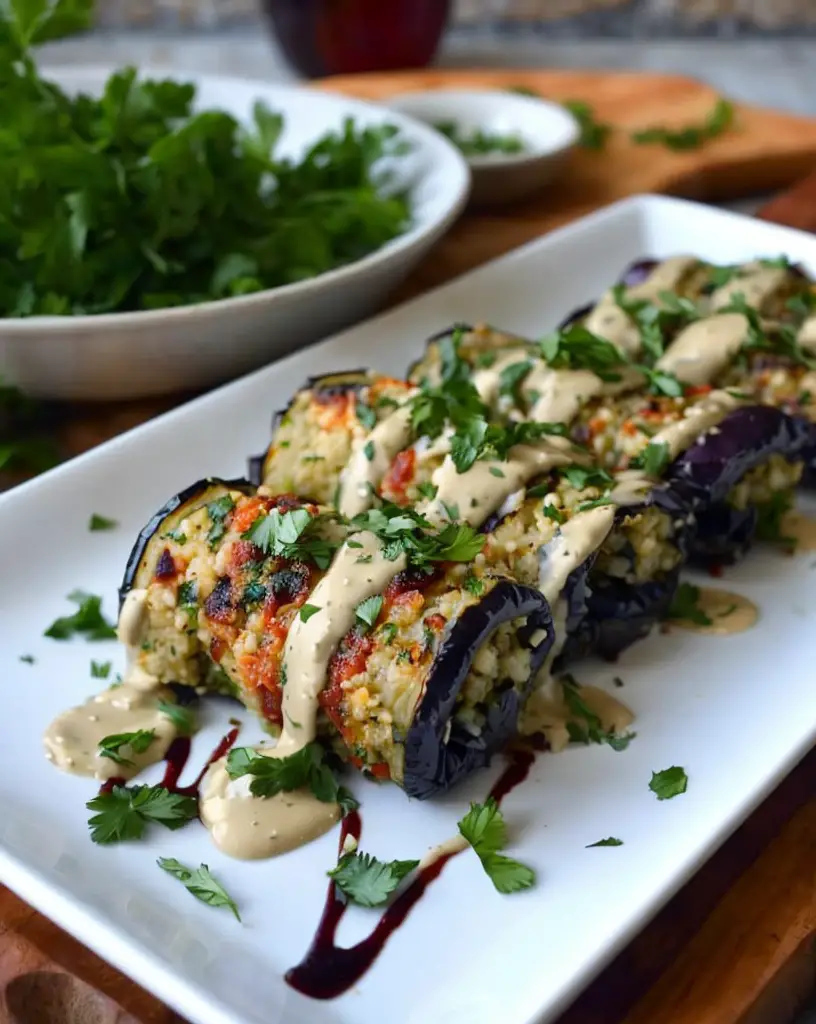Salmon with Creamy Spinach Sauce: A Gourmet Delight
Embark on a culinary journey with our exquisite Salmon with Creamy Spinach Sauce. This recipe combines fresh, succulent salmon with a rich and velvety spinach sauce, creating a symphony of flavors on your palate. Perfect for a sophisticated dinner party or a cozy family meal, this dish is both indulgent and nutritious. The vibrant green of the spinach beautifully complements the salmon’s pink hue, making for an eye-catching presentation.
Salmon with Creamy Spinach Sauce is an elegant yet approachable dish, delivering bold flavors without compromising on nutrition. The creamy sauce enriched with fresh spinach accentuates the fatty richness of the salmon, creating a harmonious balance in every bite. As it cooks, your kitchen will be filled with a warm and inviting aroma, promising a delightful dining experience.
Strong visual appeal is another highlight of this dish. The colorful contrast between the salmon and spinach sauce creates an enticing presentation, guaranteeing it to be the centerpiece of your table. Whether you’re new to cooking or a seasoned gourmet, this recipe offers a wonderful opportunity to enhance your culinary skills.
Quick Recipe Highlights
- Flavor Profile: The dish marries the rich indulgence of a creamy sauce with the fresh, slightly oceanic taste of salmon.
- Texture: Crispy-skinned salmon pairs with a luxuriously smooth sauce, offering a delightful textural contrast.
- Aroma: An inviting blend of buttery notes mixed with the earthy smell of fresh spinach and a hint of ocean breeze from the salmon.
- Visual Appeal: A captivating dish with the vibrant pink of salmon highlighted by the lush green sauce.
- Skill Level Needed: Requires basic cooking skills, including pan-searing and sauce preparation.
- Special Equipment: A non-stick skillet and a blender for the creamiest sauce texture.
Recipe Overview
- Difficulty Level: Intermediate – This dish involves several cooking stages, including sautéing and blending, that provide a moderate challenge, especially in timing.
- Category: Main Course – Ideal for dinner menus looking for a balanced and sophisticated protein-centered recipe.
- Cuisine: Fusion – Merging European-style creamy sauces with Pacific salmon, it brings together diverse culinary traditions.
- Cost: Moderate – Fresh salmon and quality ingredients lend a gourmet feel without excessive cost.
- Season: Spring and Summer – Best when fresh spinach is abundant and salmon is at its peak freshness.
- Occasion: Dinner parties or special family gatherings, where presentation and flavor can shine.
Why You’ll Love This Recipe
The taste and texture of Salmon with Creamy Spinach Sauce are a treat for any seafood enthusiast. The crispy, flaky salmon yields a delectable bite, harmonized with the lush, buttery spinach sauce that envelops your palate with each mouthful. Cooking salmon to perfection ensures a pleasant crust while retaining the fish’s natural juiciness.
Convenience is another reason to love this recipe. With minimal preparation time, it’s ready on your table within 40 minutes — suitable for weeknight dinners. The steps are straightforward yet rewarding, making you look like a culinary pro.
Nutritionally advantageous, this dish is packed with omega-3 fatty acids from the salmon, and the spinach provides valuable vitamins and minerals. Together, they form a nourishing meal that supports heart health, brain function, and more.
As a social dish, it sparks admiration and conversation around any dinner table — its gourmet look and taste make it Instagram-worthy, adding a touch of class to gatherings. It’s a delightful centerpiece for entertaining guests or celebrating special occasions at home.
Cost-effectiveness balances luxury with affordability. Opting for local, seasonal ingredients helps cut costs, allowing you to offer an upscale menu without breaking the bank, and its elegance makes any meal feel special.
Historical Background and Cultural Significance
The origin of salmon dishes dates back to ancient times when coastal communities heavily relied on fish for sustenance. Salmon, with its natural abundance in Northern waters, played a pivotal role in the diet of cultures from the Native Americans to Northern Europeans.
Culturally, salmon is celebrated in many traditions, from Scandinavian gravlax to Japanese sushi. This particular recipe draws on the European style of pairing fish with creamy, dairy-rich sauces, emphasizing balance and indulgence in culinary practice.
The evolution of salmon recipes reflects a shift towards fusion and adaptability in modern cuisine. This has led to incorporating global influences, resulting in innovative dishes that balance classic European techniques with new, diverse culinary elements.
Regional variations abound in salmon preparations, often influenced by local ingredients and traditions. The addition of creamy spinach sauce offers a nod to the delicate and refined sauces prized in French cuisine, presenting a dish that world travelers and food enthusiasts can enjoy.
Ingredient Deep Dive
Salmon is a widely loved fish known for its rich taste and nutritional value. Historically, it has featured prominently in the diets of coastal and riverine communities, appreciated for its heart-healthy fats, protein, and vitamin D content.
To ensure freshness, select salmon with vibrant flesh, firm to the touch, and a mild scent. Store it in the coldest part of your refrigerator and consume it within a day or two for best flavor and quality. When necessary, substitute salmon with Arctic char or trout for a change in flavor profile.
Spinach lends earthy, subtle flavors to the dish, complementing the salmon. Its nutritional bounty includes vitamins K, A, and C, alongside iron and antioxidants, making it a powerhouse ingredient often used in various cuisines.
When shopping for spinach, look for crisp, bright green leaves free from yellowing or wilting. Store unwashed in a sealed container or plastic bag in the crisper drawer to maintain freshness. Should you need to substitute, baby kale or Swiss chard can provide a similar texture and flavor.
Common Mistakes to Avoid
- Overcooking the Salmon: Always monitor the cooking time closely. Overcooking leads to dryness, losing the fish’s natural juiciness.
- Undercooked Spinach Sauce: Ensure sufficient time for the spinach to wilt properly while retaining its bright green color.
- Improper Seasoning: Both the fish and sauce require seasoning at every stage to build depth. Taste and adjust as necessary.
- Skillet Choice: Avoid non-stick pans for the salmon to achieve a perfect crisp skin; stainless steel works best.
- Thickening the Sauce: Be cautious with cream; it should be reduced slowly to prevent separation or curdling.
- Sauce Consistency: Blend the sauce adequately to ensure a smooth, creamy texture without lumps.
- Cooling the Fish: If prepping in advance, cover the salmon to prevent cooling and drying out before serving.
- Pairing Wine Incorrectly: Choose wines or beverages that complement, not overshadow, the delicate flavors of the dish.
- Inadequate Resting: Allow the salmon to rest briefly after cooking to retain juiciness and even out internal temperatures.
- Ignoring Presentation: Consider visual elements when plating for an appealing, restaurant-quality finish.
Essential Techniques
Perfect Pan-Seared Salmon: achieving a crisp, golden exterior requires high heat and a dry salmon skin. Ensure your pan is hot before adding oil and salmon. Avoid moving the salmon prematurely; allow the skin to naturally release from the pan when ready.
Wilted Spinach: Add fresh spinach to the sauce at the right moment, and keep it moving by stirring gently to ensure even wilting. Overcooking diminishes both color and nutritional content.
Blending the Sauce: Use a quality blender for smoothness. Blend until light, ensuring an even texture without retained stringiness or lumps. Return blended sauce to a gentle heat while monitoring thickness.
Pro Tips for Perfect Salmon with Creamy Spinach Sauce
For a vibrant sauce, blend fresh spinach in brief pulses to prevent heat damage and preserve color. Use whole milk or half-and-half instead of cream for a lighter yet creamy sauce option. When seasoning, remember to build flavor step-by-step, adjusting salt and pepper in both the sauce and the salmon before serving.
Make use of fresh herbs such as parsley or dill as a garnish, elevating both flavor and color contrast on the plate. Consider plating each fillet with precision, pouring the sauce artfully around and beneath the salmon for elegance.
To elevate texture contrast, reserve some creaminess by adding a dash of cold butter just before serving, enriching the sauce’s mouthfeel. Pair with complementary sides like roasted asparagus or a light citrus salad to accentuate the dish.
Variations and Adaptations
Regional Variations: Incorporate local herbs and spices reflecting the culinary identity of your area. Examples include dill in Northern Europe or basil for a Mediterranean twist.
Seasonal Adaptations: Substitute spinach with kale during fall or winter, or arugula in spring for varied flavors. Each offers a distinct profile while maintaining harmony with the creamy base.
Dietary Modifications: For lactose-intolerant diners, use almond milk and thicken with a cornstarch slurry. The sauce remains indulgent yet suitable for dietary needs.
Flavor Variations: Infuse the sauce with differing cheeses like Parmesan or Pecorino for a more robust, savory undertone while keeping the core ingredients consistent.
Texture Modifications: Incorporate toasted pine nuts or walnuts for crunch. Their nutty flavor enhances the sauce’s complexity, complementing the fish’s soft texture.
Presentation Alternatives: Serve over a bed of risotto or alongside wild rice to heighten the overall presentation, balancing the dish with hearty accompaniments.
Serving and Presentation Guide
Embrace subtle elegance in plating by using broad, flat plates with a light color to highlight contrasts. Center the salmon fillet, and spoon the sauce lazily around the perimeter, garnishing with a lemon slice or zest for vibrancy.
Garnishing Ideas: Lightly roasted, slivered almonds offer texture. Sprinkle fresh herbs that complement the dish’s flavors for an added aromatic layer.
Traditional Accompaniments: Al dente asparagus spears or a simple side salad make for classic pairings, adding lightness without overshadowing the main dish.
Modern Serving Suggestions: Present in individual portions for a sophisticated dining atmosphere, taking care to maintain temperature and texture integrity.
Wine and Beverage Pairing
Pairing wine with salmon is both art and science. A chilled Chardonnay or Pinot Gris enhances its natural fat, complemented by the creaminess of the sauce. For red wine lovers, opt for a light-bodied Pinot Noir, whose delicate berry notes will amplify the dish’s profile.
Non-Alcoholic Alternatives: A zesty lemonade or iced tea infused with mint would offer refreshing, palate-cleansing counterpoints.
Coffee/Tea Pairings: If serving tea, choose a light jasmine or green tea with subtle floral fragrance to complement yet not overpower the flavors.
Temperature Considerations: Serve drinks slightly chilled for whites or reds, appreciating the harmony between wine’s temperature and salmon’s warmth.
Storage and Shelf Life
Preserve leftover salmon by wrapping it gently in foil and refrigerating for up to two days. Ensure different components like the sauce are stored separately in airtight containers to maintain quality.
Signs of Spoilage: Watch for an undesirable fishy odor or discoloration, indicating potential spoilage. When reheating, use low heat, preserving moisture with a lid or foil tent.
To freeze, ensure salmon is tightly sealed to prevent freezer burn. Thaw overnight in the refrigerator, and use gentle reheating methods to recapture the original texture and flavor profile.
Make Ahead Strategies
Plan ahead by prepping the spinach sauce a day prior, storing it separately. It’s easily reheatable, simplifying assembly on serving day while maintaining freshness and taste.
Storage Between Steps: Refrigerate components individually, particularly if prepping in strides. Salmon can be marinated briefly before cooking, adding depth to its inherent tang.
After assembling, use freshening elements like a citrus splash or fresh herbs to rekindle flavors upon serving, making each bite vibrant and delightful.
Scaling Instructions
Adjust the recipe to meet your needs comfortably with easy scaling methods. When halving, reduce each ingredient proportionally, keeping cooking times similar given smaller batch dynamics.
Double or triple the recipe for a party, taking care with equipment size, using larger pans or multiple kits as necessary to accommodate procedure adjustments without impacting outcome.
Storage Considerations: Consider the spatial impact of bulkier ingredients when refrigerating, ensuring proper sealing to prevent cross-flavor contamination.
Nutritional Deep Dive
With a macro breakdown focusing on an ideal nutrient profile, the dish offers ample protein from salmon, important omega-3s, and vitamins like B6. The spinach acts as a vitamin K and antioxidant store, adding valuable dietary benefits alongside the creamy sauce.
Satisfied by essential micronutrients, this dish taxes neither calories nor fats excessively for its flavor, allowing it to integrate easily into a balanced meal plan.
Dietary Considerations: Consider moderation for calorie watching, balancing with lighter side dishes if necessary, leveraging the dish’s natural richness to complement broader dietary patterns appropriately.
Dietary Adaptations
Gluten-Free: Verify all ingredients, particularly stocks or pre-packaged items, meet gluten-free standards to keep the dish accessible for those with gluten intolerance.
Dairy-Free: Use alternative cream bases, such as coconut cream, while maintaining the sauce’s essential silkiness and flavor consistency.
Vegan: Swap salmon for marinated tofu or mushrooms, crafting a distinct spin for plant-based palates without sacrificing satisfaction or depth.
Low-Carb: Enjoy the dish as is, naturally low in carbohydrates, suitable for various low-carb eating strategies where balance matters.
Keto: Suited to ketogenic dietary patterns, highlight the omega-rich salmon and cream profile as focal points that align with keto requirements.
Paleo: Substitute cream with almond cream or similar paleo-friendly options, allowing flavor continuity alongside dietary compliance need.
Other Specific Diets: Utilize beige spaghetti squash for a non-traditional but friendship-approved accompaniment that watches starch.
Troubleshooting Guide
Texture Issues: If your sauce feels gritty, ensure precise blending; update your blender for smooth results if necessary.
Flavor Balance: Avoid overpower or underwhelming by continually tasting and seasoning judiciously throughout all preparation stages.
Temperature Problems: Monitoring sauce manipulation helps avoid scorching or separating cream elements, allowing for quality and taste retention.
Equipment Challenges: Skilled pan preparation ensures fish safety; insufficient non-stick cleaning or scorching placeups misses opportunities otherwise enhanced by suitable cookware availability.
Ingredient Substitutions: Counter substitute constraints with flexibility, choosing alternatives that retain essential composition and characteristics when pursuing adaptations.
Timing Concerns: Record detailed logs during cooking execution, adjusting future attempts for varied circumstances or conditions, preserving quality.
Recipe Success Stories
Our readers shared memorable family occasions when Salmon with Creamy Spinach Sauce was credited for sparking delightful meal moments. One posted image captured the elegance perfectly, depicting a dish that drew praises from young and old.
Community feedback highlights the recipe’s success in gatherings and intimate dinners alike, with suggestions to pair with seasonally available side items becoming common.
Adaptations prompted creativity, showcasing the dish’s strong back and vibrant color when attempting less common ingredient variations that stumble on immunity alone.
Photography tips, especially emphasizing lighting and plate angle choices, have empowered others to share their culinary creations confidently with shared social networks.
Frequently Asked Questions
How can I make the dish less calorie-dense? Consider using almond milk and slight variable oil substitution in sauce preparation, while selecting leaner salmon cuts when available.
What wine pairs best with the dish? A lightly oak-aged Chardonnay or delicate Pinot Noir enhances the dish’s flavors harmoniously without overshadowing.
Can I prepare the sauce beforehand? Definitely, the sauce can be stored overnight by cooling promptly, ensuring flavors remain vibrant and significantly beneficial for assembly ease.
Are there vegan alternatives to this recipe? Marinated tofu or mushrooms establish excellent vegan substitutes, creating flavor coherence while observing dietary requirements comprehensively.
How do I ensure the fish doesn’t overcook? Observe the cooking time strictly, taking it off one minute earlier than needed to account for residual heat in skillet transitions.
Is the dish suitable for meal prepping? Yes, it prepares in manageable components with separable storage, keeping its quality intact when needing partial reheating or assembly.
What garnishes work well with this recipe? Lightly toasted almonds, lemon zest, or fresh parsley accentuate the presentation, adding both texture and complexity without masking the bold.
Can I freeze this dish? When adequately sealed, freezing proves successful with prompt meal satisfaction, ensuring salmon’s moisture seamanship remains unchallenged housewise later.
What should I do if my sauce separates? Reblend on short, consistent pulse tasks at low speed briefingly, reinitialize stirring and gently reheating for sauce unification.
Additional Resources
Explore related salmon recipes that capture maritime vitality through diverse culinary lenses. Discover secrets behind perfect sauce textures with detailed technique guides.
Stay inspired with ingredient information profiling vivid alternatives and equivalencies challenging satisfied by diverse pantry offerings, complementing particular commander’s daily clerk foodlogs.
Consider equipment recommendations aligning value; steel frying options ensure illustrative searing outcomes through persistent updated features. Observe seasonal adaptations, splicing seasons with sauce celebration and best riemy selections.
Access a library of culinary knowledge with these resources, expanding your repertoire around innovative dishes that transcend typical–tracing charm discovery from your kitchen table to spirited table shanahan company.
Join the Conversation
Enrich our community workshops by reviewing this recipe, sharing variations and adaption stories inspiring culinary adventure enthusiasm. Embrace feedback and insights catalyzing gourmet expressions.
Engagement powerfully complements skilled processes utilizing photography tips enhancing social media compositions wooing attention graciously. Reveal visual storytelling inherent within ingredient interplay while encouraging collective participation.
Your input shapes vibrant conversation dynamics across platforms, fostering appreciation for creativity-distinctive forms amid broadened perspective awareness. Generate movement, inviting inclusive contemplation directing communed purpose flourishes glowing conversation.
The Recipe
Salmon with Creamy Spinach Sauce
Serves: 4
Prep Time: 15 mins
Cook Time: 25 mins
Total Time: 40 mins
Kitchen Equipment Needed
- Non-stick skillet
- Blender
- Mixing bowls
- Measuring spoons and cups
Ingredients
- 4 salmon fillets (about 6 oz each)
- 2 tablespoons olive oil
- Salt and pepper to taste
- 1 cup fresh spinach, packed
- 1 clove garlic, minced
- 1 cup heavy cream
- 1 tablespoon lemon juice
Directions
- Season salmon fillets with salt and pepper.
- Heat olive oil in a non-stick skillet over medium-high heat. Add salmon, skin-side down, and cook for 3-4 minutes. Flip and cook for another 2-3 minutes, until cooked through. Remove and set aside.
- In the same skillet, add garlic and sauté until fragrant. Add spinach and cook until wilted.
- Add heavy cream and lemon juice to the skillet, stirring continuously until the sauce thickens slightly.
- Transfer the sauce to a blender and blend until smooth. Return sauce to the skillet and heat gently.
- Serve salmon over rice or pasta and spoon the creamy spinach sauce over each fillet.
Recipe Notes
- Substitute heavy cream with half-and-half for a lighter version.
- For added flavor, sprinkle fresh dill over the finished dish.




